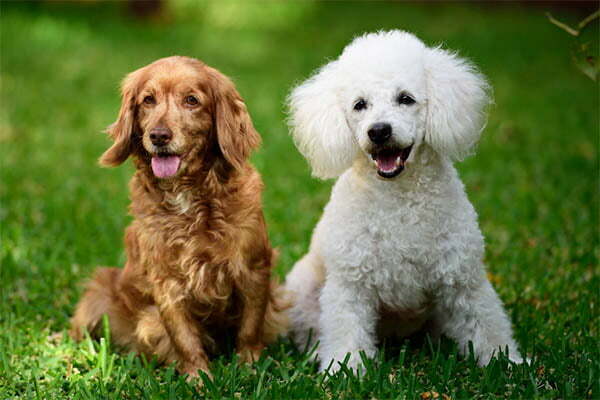
Are you a dog-lover who deals with dander allergies? Our condolences – that can be a really tricky situation to manage.
If you’ve been considering getting a dog for a while despite your allergies, you will probably already know of the existence of hypoallergenic dogs.
Now, many people take the word ‘hypoallergenic’ to mean that the dog being described will definitely not, under any circumstances, cause any allergic reactions of any kind.
This isn’t strictly true. Actually, ‘hypoallergenic’ simply means that something is less likely to cause allergic reactions.
With that being said, choosing a hypoallergenic dog breed to share your home and life with will minimize the chances of unpleasant reactions.
Hypoallergenic dogs tend to shed much less than non-hypoallergenic breeds, so the release of dander particles into the air will be greatly minimized.
Unfortunately, because so many of the known hypoallergenic dogs are smaller breeds, allergy sufferers can be led to believe that small dogs are the only ones that will be suitable for them.
We’re here today to tell you that this simply isn’t true! There are plenty of large, hypoallergenic dog breeds out there just waiting for a loving home!
In today’s article, we’ll be introducing you (or re-introducing you) to the top 10 big hypoallergenic dogs to help you find your perfect pooch!
The Poodle
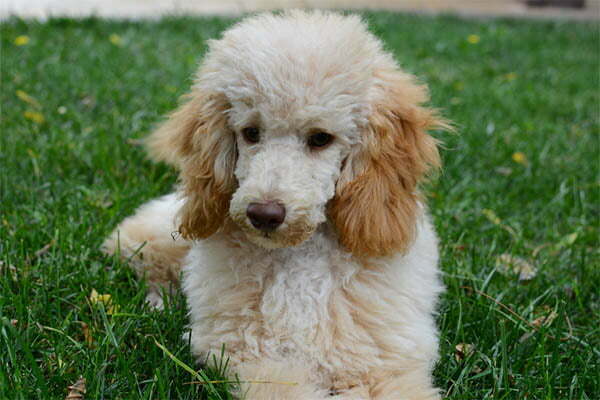
Here’s one dog you’ve definitely heard of but may not have realized is hypoallergenic: the standard poodle!
These proud princes and princesses are the royalty of the dog world: they’re smart, athletic, affectionate, and much safer for allergy sufferers than many other breeds.
Standard poodles are considered large dogs, usually standing up to a meter tall when fully grown.
Poodles have dense and curly coats, consisting of a top coat and an undercoat, which might lead allergy sufferers to instinctively steer clear.
However, the reason Poodles make such good hypoallergenic dogs is that when they do shed (which isn’t very much), the fallen hairs usually get caught in the rest of the coat.
This minimizes the release of dander into the air compared to hairs that are allowed to flutter freely all over your sofa.
If you’re somebody who likes to get out and about to exercise a lot, then a poodle could be ideal for you.
However, if you’re looking for a dog that’s low-maintenance in terms of exercise, you should definitely consider a different breed.
The Doodles
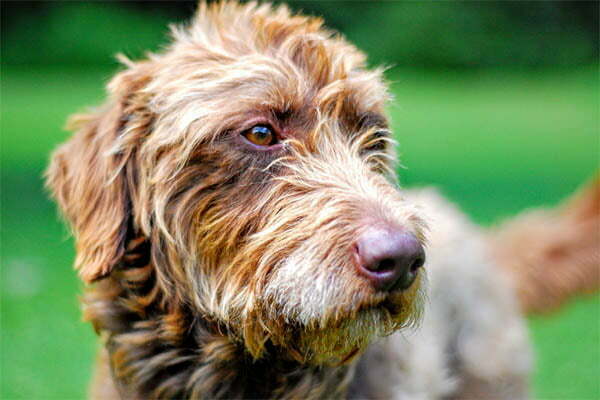
Because of the Poodle’s status as a hypoallergenic dog, the breed has been used as a parent to many hypoallergenic Poodle cross-breeds.
Some of the hypoallergenic Poodle crosses you’ve heard of are probably small, fluffy dogs, such as the Maltipoo. However, Doodles can be large as well as small.
The Labradoodle and Goldendoodle are the most popular choices.
Both are crosses between the Poodle and a Retriever breed, and both can reach 24 inches in height, although the Labradoodle has one Labrador Retriever parent while the Goldendoodle is a mix of the Poodle and the Golden Retriever.
Retrievers are energetic, playful, affectionate, loyal, and smart – what’s not to love?
When you cross a Retriever with a Poodle, you’ll get an extremely intelligent, loving, and family-oriented dog that’s also unlikely to set off your allergies.
Just make sure you and the other members of your household have enough energy to keep up with your new, fun-loving friend.
The Afghan Hound
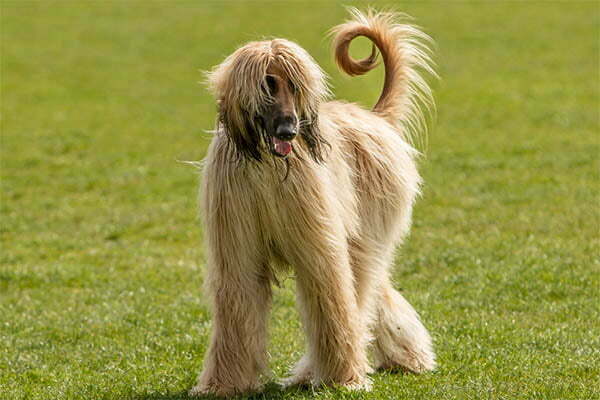
The Afghan Hound certainly has a reputation for looking a little unusual, but we think this age-old breed is absolutely gorgeous! Look at that luscious coat and those beautiful, soulful eyes!
Afghan Hounds have very fine coats that don’t shed very much at all. Since they only have one layer of fur, you won’t have to deal with any undercoat shedding or malting in the warmer months. These dogs can reach 74 cm in height (1.14 meters).
If you have allergies or asthma and would like a big, beautiful dog as a companion, then the Afghan Hound could be a perfect fit!
However, there are a few things you should know about this breed before you commit to caring for one.
For one thing, the Afghan Hound is very high-energy. They’re usually well-behaved inside the home, but if you don’t give your Hound enough exercise, they can become very rowdy.
That’s why it’s so important not to take on an Afghan Hound unless you’re prepared to take your dog for long walks or even runs every day. You will also need to put aside time for daily grooming since the Afghan Hound’s long hair can quickly become tangled.
Your Afghan Hound is also likely to need quite a lot of obedience training, not because the breed is inherently disobedient, but because there are a few natural traits of the breed (such as prey instinct) that can become problematic over time.
The Airedale Terrier
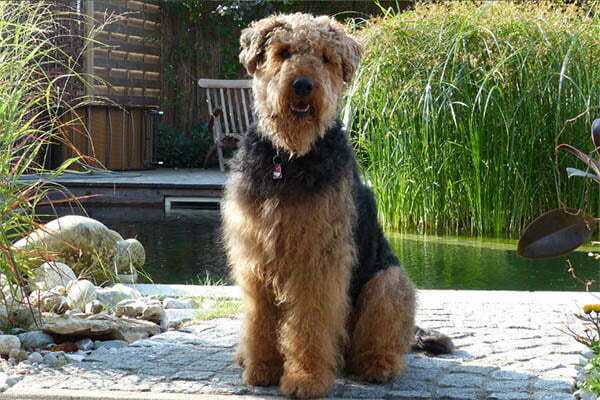
The Airedale Terrier is a large but absolutely adorable dog that would make a great solo companion or family member.
This dog breed grows up to 23 inches tall (measured from shoulder to floor) and can weigh up to a very respectable 65 lbs.
Airedale Terriers do shed a little bit, but this is mostly confined to the warmer seasons when their coats need to thin out.
So, if your allergies are mild enough that you can tolerate a little bit of dander for a few months out of the year, an Airedale Terrier could be a great addition to your household.
One thing that the Airedale Terrier is known for, outside of being hypoallergenic, is its playful and friendly nature. An Airedale Terrier will be your best friend for life if you can get past their tendency for boisterousness and give them all the love and exercise they crave.
The Samoyed
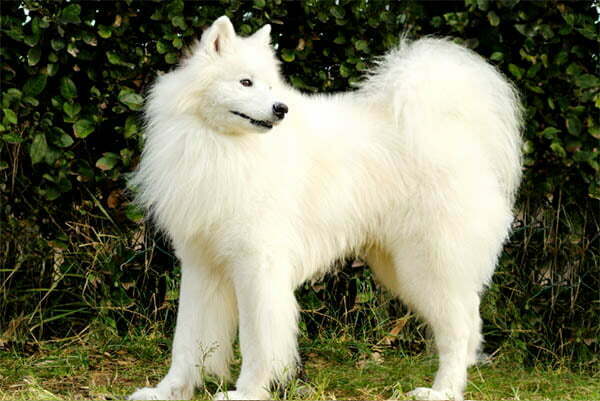
Although Husky breeds are highly sought-after for their beautiful appearance, the Siberian Husky is not a hypoallergenic breed. If you’re a husky lover but can’t cope with all the dander, you might be well suited to a Samoyed dog.
Samoyeds can grow up to a meter tall with an upper healthy weight threshold of 65 lbs.
Wolf-like dogs like the Samoyed have massively increased in popularity in recent years, in part because of the phenomenal televisual success of Game of Thrones.
However, please be aware that a Samoyed is primarily a hunting dog. This breed has a natural hunting instinct, which means that it’s not the best dog to have around smaller animals since they can easily be confused for prey.
Despite their hunting lineage, however, the Samoyed isn’t an aggressive dog. On the contrary, the breed as a whole loves to be around humans.
The Giant Schnauzer
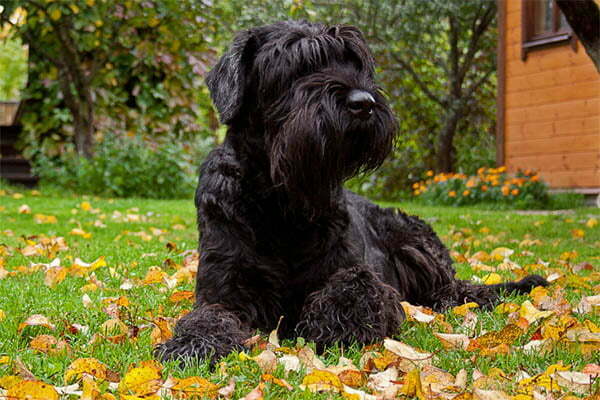
Are you looking for a really, really big hypoallergenic dog? Meet the Giant Schnauzer!
This distinguished-looking breed (check out that beard!) is
one of the smaller dogs on our list of large, hypoallergenic dogs. They can reach heights of 1.1 meters (110 cm).
Giant Schnauzers are considered hypoallergenic dogs because their dense, wiry coats shed very minimally.
The Giant Schnauzer is a natural-born protector and hunter due to the breed’s origins as a guard dog and tracker. So, while these dogs can demonstrate dominant and even aggressive behavior when provoked, their protective instincts make them extremely loyal to their families.
These dogs are high-energy, so they need a lot of exercise, and they also demonstrate an adorable, playful streak if you get them involved in games.
The Portuguese Water Dog
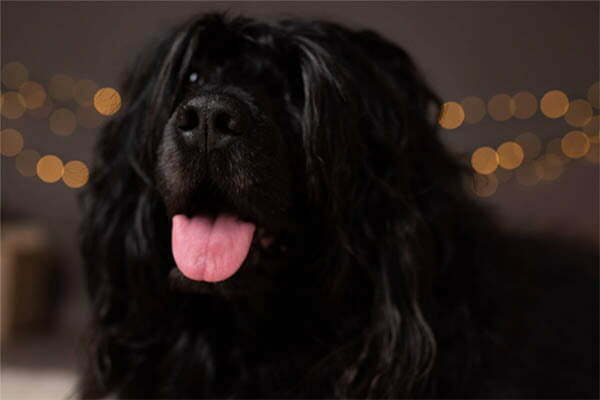
The curly-haired Portuguese Water Dog was originally bred to assist fishermen with their work, cleverly directing shawls of fish into waiting nets.
Today, you’re more likely to encounter the Portuguese Water Dog as a hypoallergenic pet than a working dog, although the breed still loves to stay very active and be involved with everything their humans are doing.
Male Portuguese Water Dogs can grow up to a meter in height and weigh almost 60 lbs, so while they’re not the heaviest of the dogs on this list, they’re certainly up there height-wise.
Portuguese Water Dogs have curly or wavy coats with no undercoat, so the shedding you see with double-coated breeds is reduced to a minimum.
Nonetheless, the breed is still relatively high-maintenance when it comes to grooming since the density of the single coat makes matting a potential issue.
The Lagotto Romagnolo
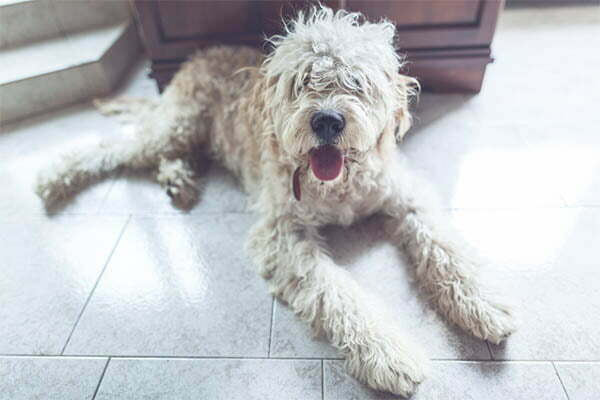
You may not have heard of the Lagotto Romagnolo, since it’s not one of the more popular dogs on our list, but after reading this, you might just discover that this Italian Waterdog is your perfect companion!
Lagotto Romagnolos traditionally worked as truffle hunting dogs in Italy, sniffing around marshlands in search of waterfowl.
Today, these dogs are more commonly adopted into the home as pets and companions due to their highly affectionate nature, although, of course, they still make excellent working dogs.
The Lagotto Romagnolo’s curly, double coat is pretty high-maintenance, so you will need to be prepared to brush your new friend daily to prevent matting.
However, the upside to the coat is that it doesn’t shed much, so allergic responses should be minimal.
The Irish Water Spaniel
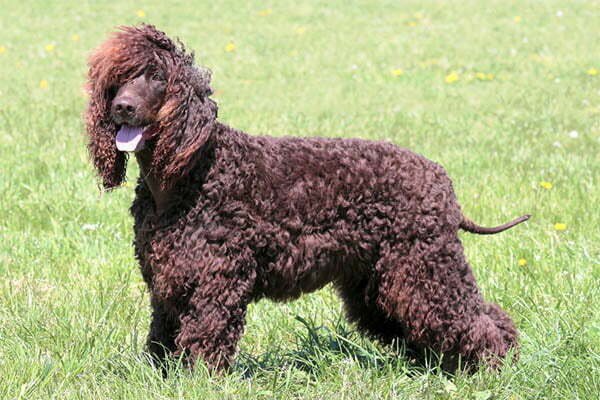
The Irish Water Spaniel looks quite similar to the Standard Poodle, and there are similarities in the histories of these two breeds, as well.
Like the Poodle, the Irish Water Spaniel was bred as a retrieving dog, usually for hunters, and was trained to bring in fallen game, including from bodies of water.
Therefore, the Irish Water Spaniel is an athletic, high-energy dog that typically enjoys swimming as well as running and playing.
Irish Water Hounds can grow up to 61 cm (1.01 meters) for males and 58 cm for females.
This breed has two coats made up of multiple textures. The back, rear, and side body fur is usually tightly curled, while the hair on the throat and legs is more relaxed.
The coats don’t shed very much, but they do need brushing a lot, so we wouldn’t recommend bringing this breed home unless you’re prepared to put the hours in with the comb.
The Bergamasco Shepherd
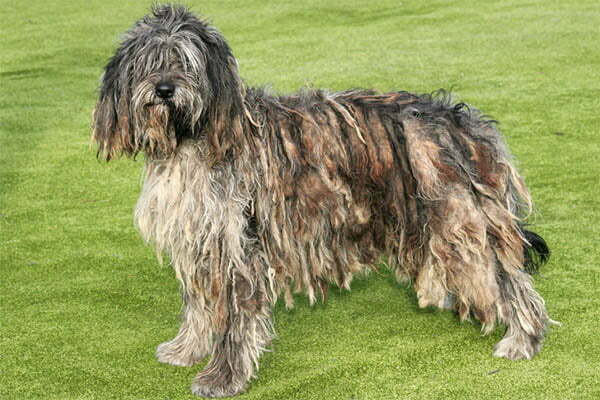
Finally, we’d like to introduce you to this fluffy fellow: the Bergamasco Shepherd!
Underneath that enormous mass of wild hair (which doesn’t shed at all and doesn’t even need to be brushed), the Bergamasco Shepherd boasts an impressively large frame. The males can reach 62 cm (1.02 meters) in height and nearly 85 lbs in weight.
In terms of grooming, the Bergamasco Shepherd is the perfect large, low-maintenance dog for allergy sufferers.
While they do, of course, need enough exercise to stay healthy, the Bergamasco Shepherd also isn’t as high-maintenance as some other breed when it comes to exercise.
Walking your Bergamasco for between half an hour and an hour a day, supplemented with high-intensity play sessions, should be enough.
Final Thoughts
We hope our profiles of the top 10 large, hypoallergenic dogs have taught you something and potentially even led you to your ideal companion!
In our experience, the biggest dogs often have the biggest hearts, so we’re sure that no matter which hypoallergenic breed you choose, you’ll make wonderful memories with your new best friend.
A common trait of most large, hypoallergenic dogs is a love of exercise.
Therefore, if you are considering bringing home a big, hypoallergenic dog, we would strongly recommend making sure that you have enough space on your property for your dog to run and play.
Remember to take a breed’s temperament into account when choosing a hypoallergenic dog, considering factors such as the ages and personalities in your family unit.
Every breed is unique and has its own set of needs, tolerance levels, and abilities, so finding the perfect dog for your home involves taking all of these things into account in addition to their hypoallergenic status.
